Split Pea Hummus
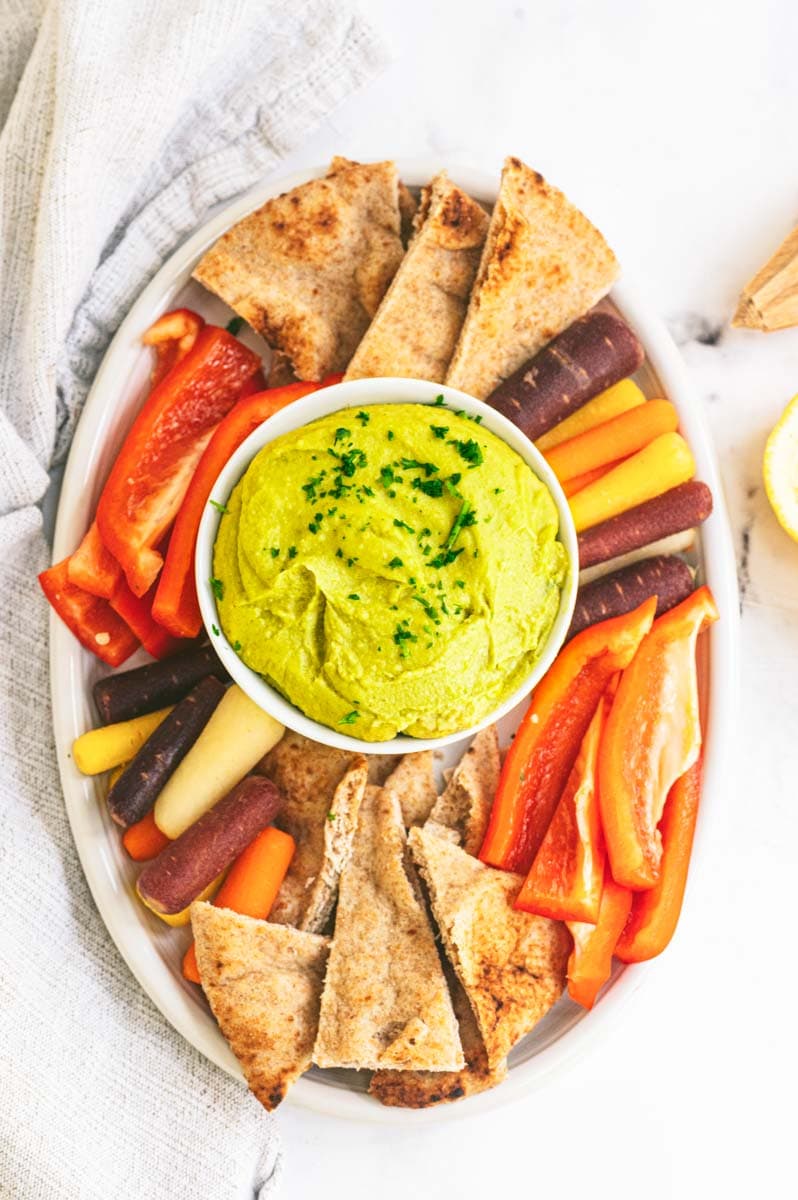
Split peas are the sad, forgotten foods of the legume aisle. They are packed with the same plant-based protein, fiber, and nutrients of their trendier legume cousins (I'm looking at you chickpeas, with your fancy aquafaba), but no one seems to ever reach for them. We're going to change that-because split peas are delicious, nourishing, and supremely easy to cook with!
A good place to start with split peas is by making hummus. Now, I love a good chickpea hummus as much as the next girl (especially my savory pumpkin hummus), but there is something just amazingly intriguing about this split pea hummus. It has such an interesting, earthy flavor, and the color is off-the-charts beautiful! My green-loving kid devours this stuff.
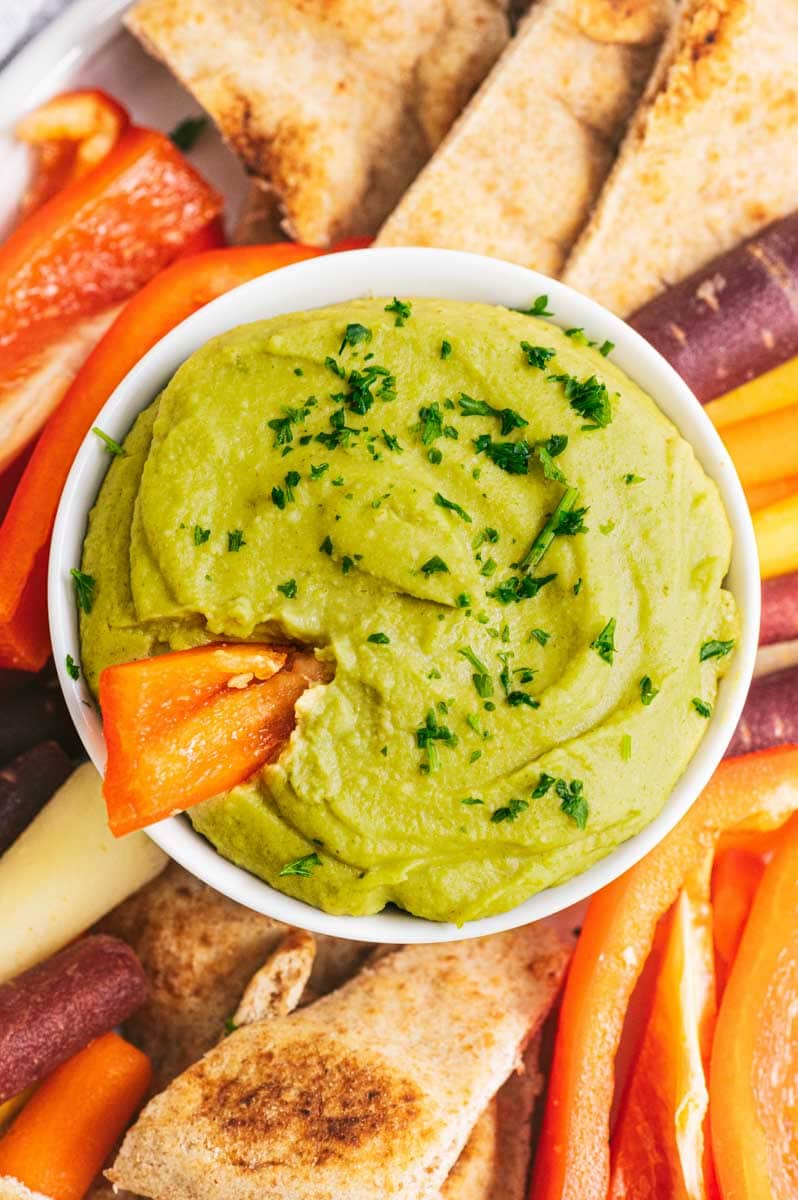
What do I need to make split pea hummus?
The ingredients for split pea hummus are pretty straightforward if you've ever made hummus before. Here's what you'll need:
- Dried split peas-You'll probably find these with the dried beans at your grocery store.
- Vegetable broth-Cooking split peas in broth increased the layers of flavor in the final hummus. If you're out of broth, you can also use water.
- Tahini-This is sesame seed butter (think peanut butter, but made with sesame seeds instead of peanuts). Most stores have it either with their other nut butters or in the international foods section.
- Garlic-Fresh garlic cloves is what you're looking for here, not garlic powder or minced garlic in the jar.
- Lemon-Bottled lemon juice will work in a pinch, but fresh lemon will give you the best bright, citrusy flavor.
- Extra virgin olive oil-This is what helps make the hummus smooth and creamy, plus the nourishing fats help this snack make you feel fuller longer.
- Ground cumin, cayenne, and salt-These will add a little bit of an extra flavor boost!
Wholefully Protip
If you don't need this to be vegan or vegetarian, you can also use chicken bone broth in this recipe.
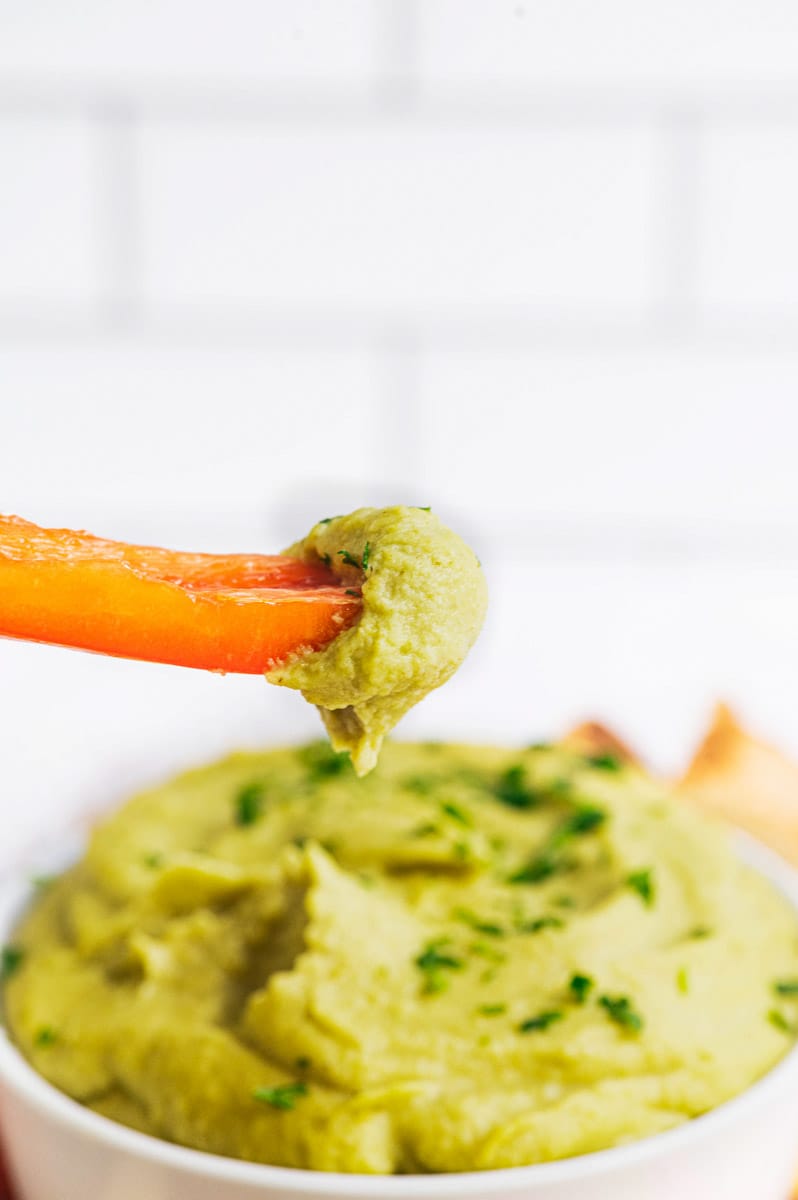
Do I need to soak split peas before I cook them?
Nope! Unlike most dried legumes, split peas don't need to be presoaked in order to cook up quickly. If you've had digestive problems with split peas or lentils in the past though, soaking overnight may help your body digest them better.
Want to save this recipe?
What should I serve with split pea hummus?
I love making a hummus plate with pita wedges, carrots, peppers, falafel patties, and anything else that is good for dipping in hummus! Hummus can also be used in sandwiches and wraps to add flavor and moisture, as a dressing on salads, and even mixed into deviled eggs!

How long will split pea hummus last?
In the fridge, split pea hummus will last up to a week. Hummus also freezes beautifully! Just spoon into a freezer-safe container and freeze. Thaw completely before enjoying it. You might need to stir vigorously if the hummus has separated, but it'll come back together quickly.
What else can I do with split peas?
We're on a one-website mission to get everyone cooking and enjoying more split peas! Here are some of our favorites to try out:
📖 Recipe

Split Pea Hummus
Ingredients
- ⅔ cup dried green split peas
- 2 cups vegetable broth
- ¼ cup tahini
- 2 garlic cloves
- Juice and zest of 1 lemon about 2 tablespoons juice and 1 teaspoon zest
- 1 tablespoon ground cumin
- ½ teaspoon salt plus more to taste
- ⅛ teaspoon ground cayenne pepper plus more to taste
- ¼ cup olive oil
- Crackers, veggies, pita for serving
Instructions
- Combine ⅔ cup dried green split peas and 2 cups vegetable broth in a medium saucepan over high heat. Bring to a boil, stir, then reduce heat, cover, and simmer until the split peas are very tender (almost mushy) and most of the liquid is absorbed, about 30 minutes.
- Transfer the cooked split peas to a food processor. Add in ¼ cup tahini, 2 garlic cloves, Juice and zest of 1 lemon, 1 tablespoon ground cumin, ½ teaspoon salt and ⅛ teaspoon ground cayenne pepper. Pulse until very smooth-you may need to scrape down the sides occasionally.
- With the food processor running, stream in ¼ cup olive oil and continue to run until just combined. Taste for seasoning, adding more salt if necessary, then serve with crackers, veggies, and pita, for dipping.
Video
Notes
- If you make this hummus right after cooking the split peas, you'll end up with warm hummus, which is actually quite nice! But if you prefer, you can let it cool completely before serving.


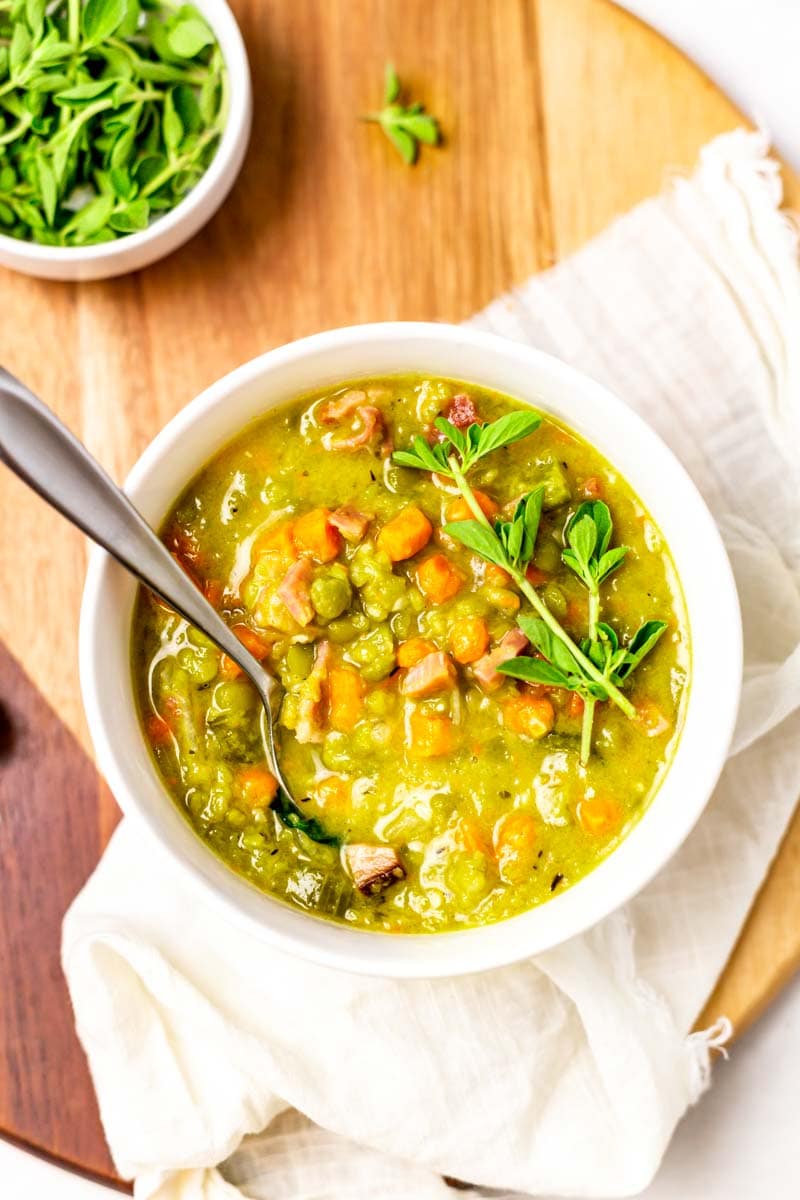
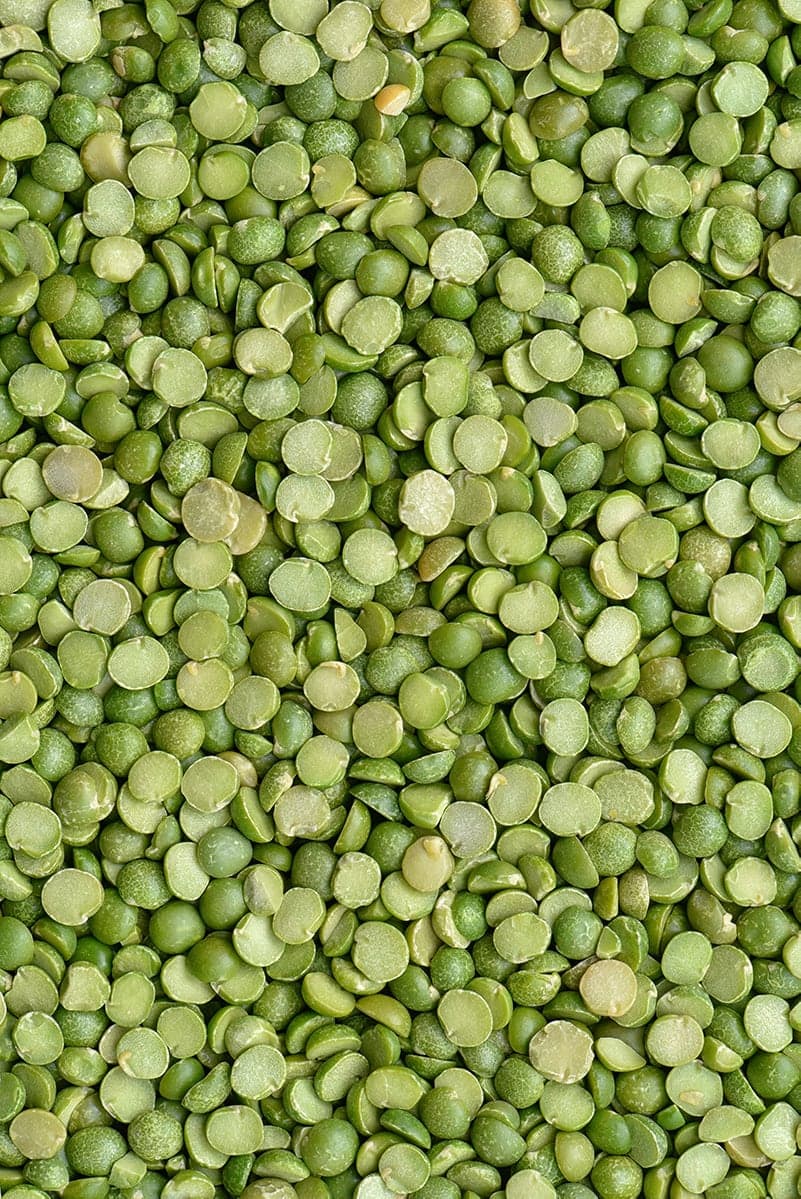
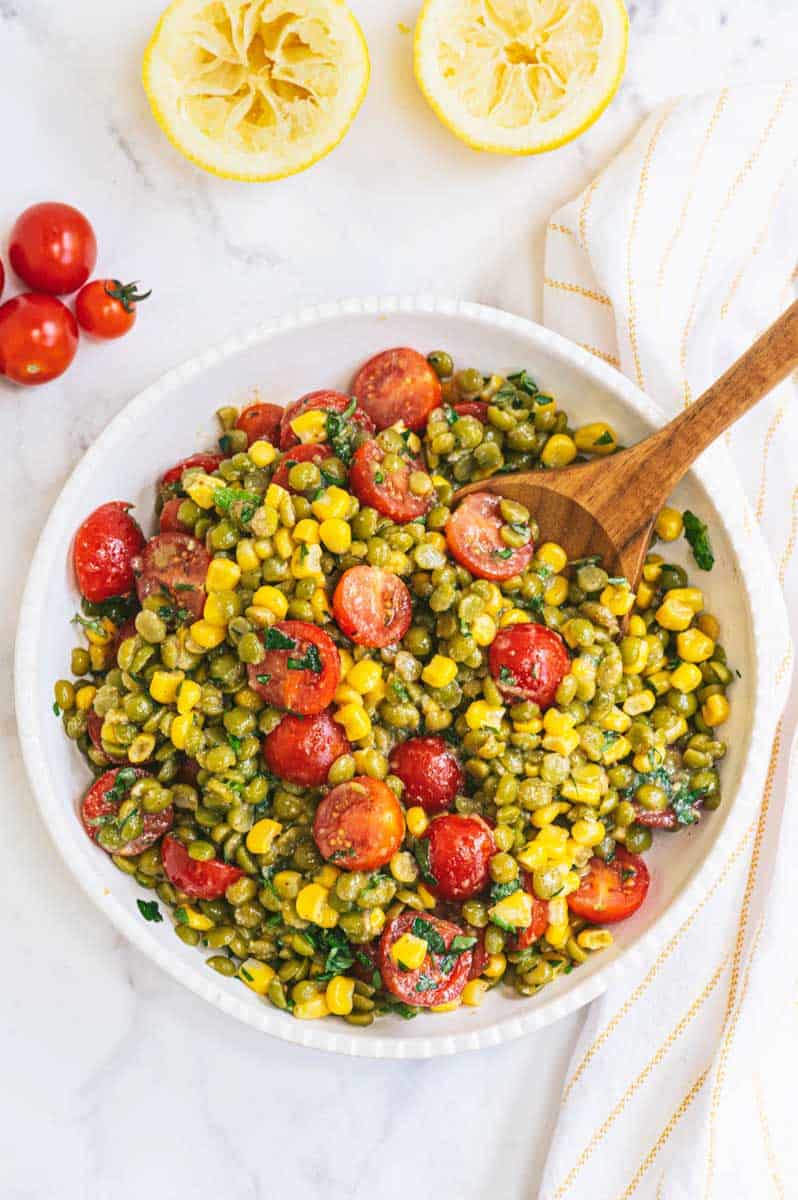
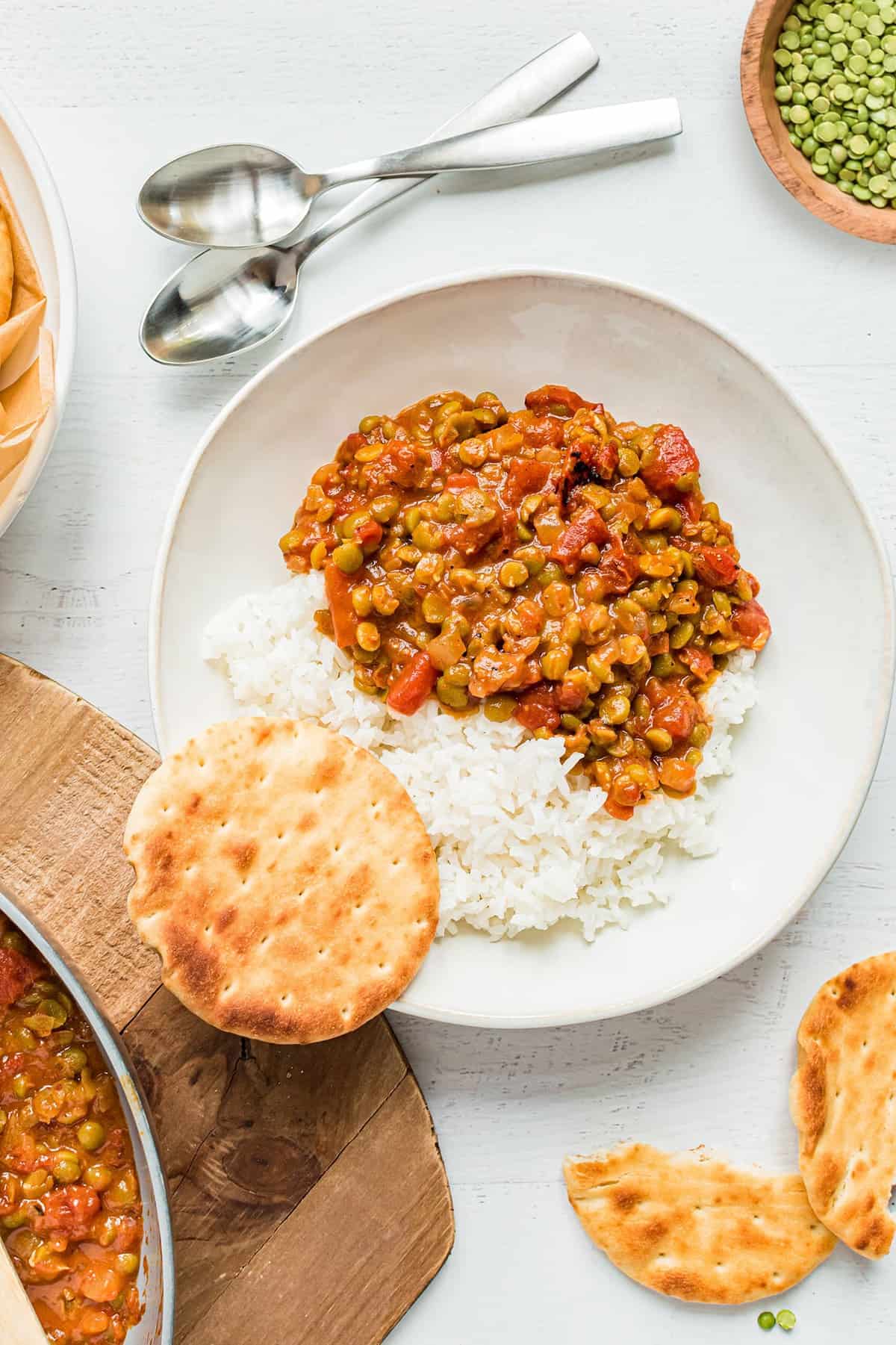


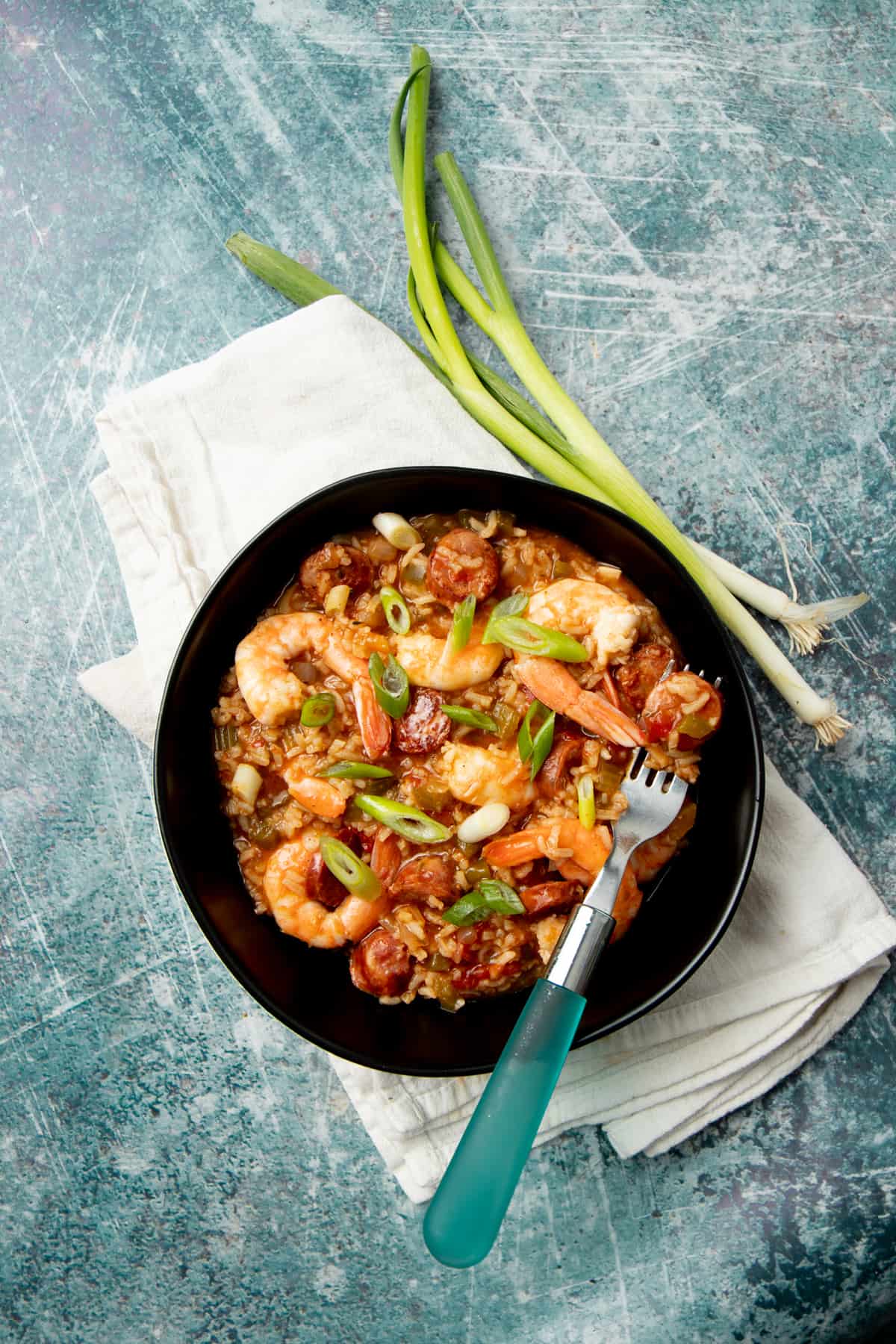
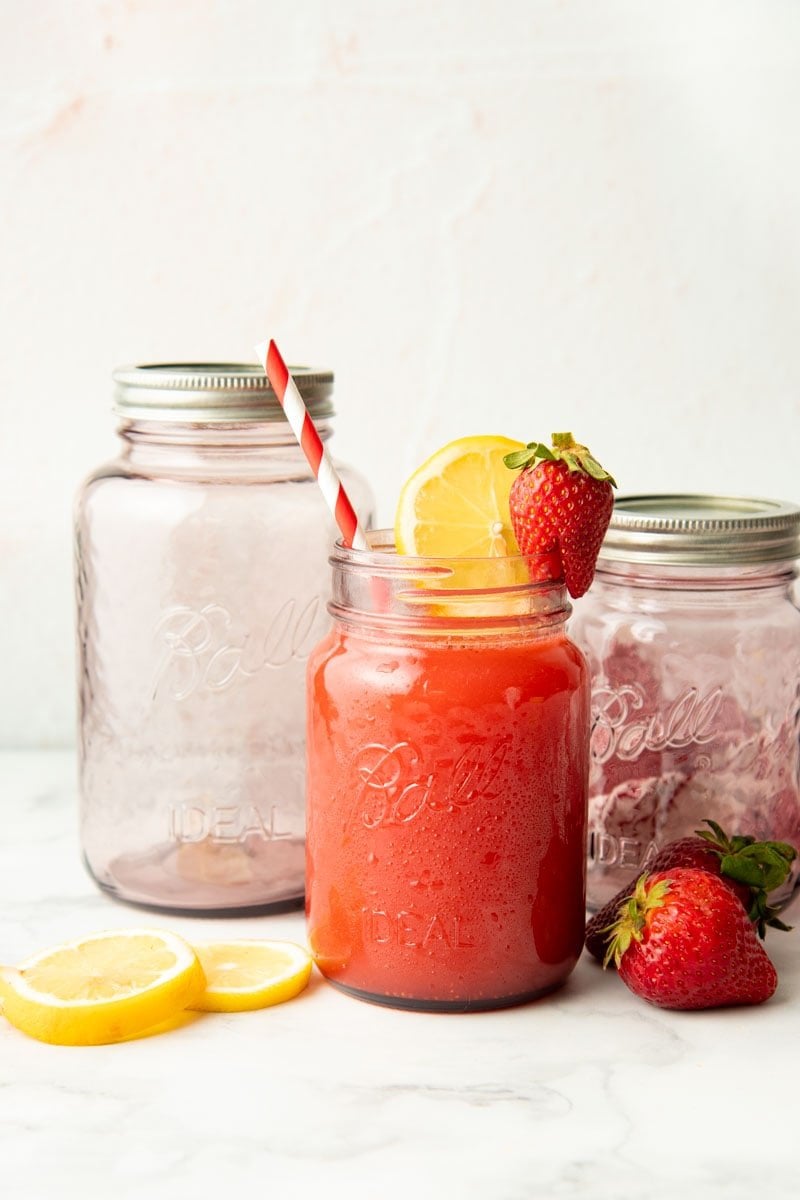
This hummus is delicious! A lot better than hummus made with chickpeas
Yay! Thanks, Janet! We're so glad you like it =)
It is a common misconception to think that the word hummus means dip. The word hummus actually means chickpeas (usually whole). So the name of this recipe actually translates to split pea chickpeas. Hummus dip is called hummus with tahini, to differentiate it from other any other "hummus" recipe.
Just sharing my two centsents, other than that, i love the website and the amazing recipes.
Thank you!
Two cents*
I appreciate your info about the word hummus (a year later). I'm just a reader but I like to know such things. Meanings change, though; you see things like "soybean hummus", etc. I did think real hummus involved chick peas & tahini; always good to know original sources. - Is Garlic necessary, do you know? Cos I dislike it, especially raw. I'll leave it out if make my own! Assume tahini is key, though. Take care.
how long does this last in the fridge?
You should be able to get a week or more out of it easily. 🙂